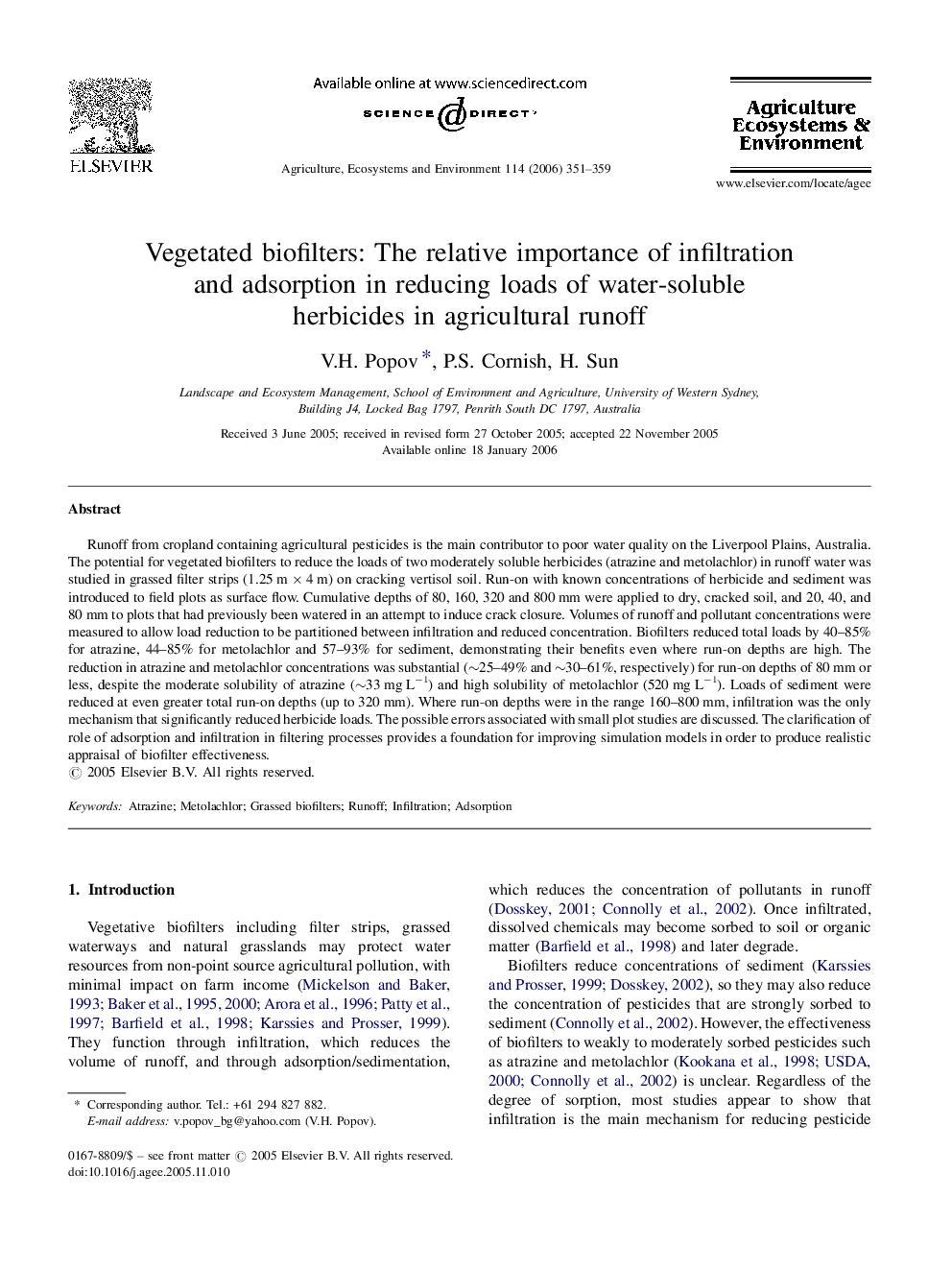| Article ID | Journal | Published Year | Pages | File Type |
|---|---|---|---|---|
| 2416070 | Agriculture, Ecosystems & Environment | 2006 | 9 Pages |
Runoff from cropland containing agricultural pesticides is the main contributor to poor water quality on the Liverpool Plains, Australia. The potential for vegetated biofilters to reduce the loads of two moderately soluble herbicides (atrazine and metolachlor) in runoff water was studied in grassed filter strips (1.25 m × 4 m) on cracking vertisol soil. Run-on with known concentrations of herbicide and sediment was introduced to field plots as surface flow. Cumulative depths of 80, 160, 320 and 800 mm were applied to dry, cracked soil, and 20, 40, and 80 mm to plots that had previously been watered in an attempt to induce crack closure. Volumes of runoff and pollutant concentrations were measured to allow load reduction to be partitioned between infiltration and reduced concentration. Biofilters reduced total loads by 40–85% for atrazine, 44–85% for metolachlor and 57–93% for sediment, demonstrating their benefits even where run-on depths are high. The reduction in atrazine and metolachlor concentrations was substantial (∼25–49% and ∼30–61%, respectively) for run-on depths of 80 mm or less, despite the moderate solubility of atrazine (∼33 mg L−1) and high solubility of metolachlor (520 mg L−1). Loads of sediment were reduced at even greater total run-on depths (up to 320 mm). Where run-on depths were in the range 160–800 mm, infiltration was the only mechanism that significantly reduced herbicide loads. The possible errors associated with small plot studies are discussed. The clarification of role of adsorption and infiltration in filtering processes provides a foundation for improving simulation models in order to produce realistic appraisal of biofilter effectiveness.
